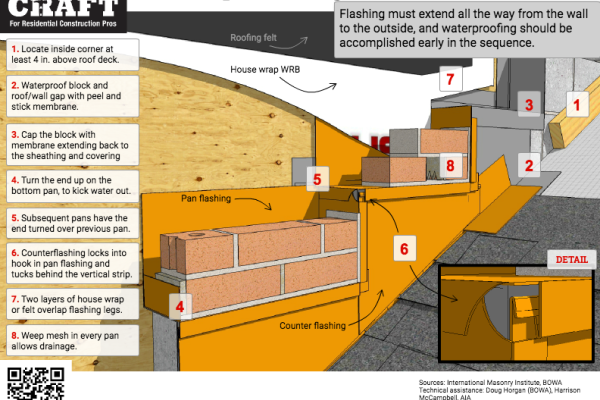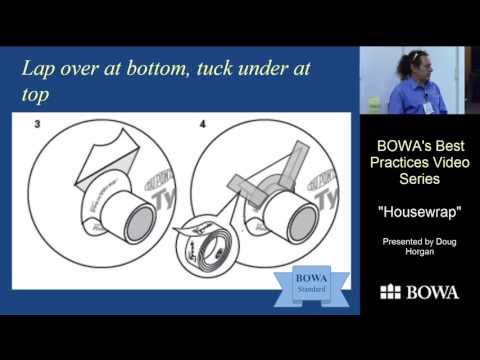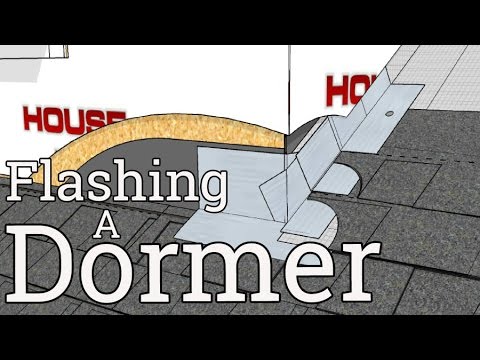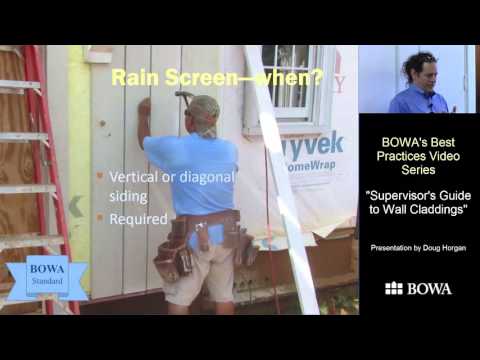Step flashing to a brick wall involves a lot of trade peeps sequenced over many steps in the building process. Carpenters, roofers, and masons, at the least, but probably a couple of gophers at various points, all work on the connection between a masonry wall and a shingled roof. And when kitchens fill up with cooks, well, it can either go right or wrong.
If everyone is on the same page, things tend to go right.
Step-by-step guide for step flashing to brick:
- The process begins with locating the support blocks. Make sure the inside corner is at least 4 inches above the roof deck—to clear the step flashing. A 2x4 laid on the roof is a good gauge for locating the block.
- Next, waterproof the block and the gap between the roof and wall with peel and stick membrane, extending off the wall and onto the roof.
- Cap the block with membrane, extending back to the wall sheathing.
- Fold a vertical strip into the inside corner, and extend the back piece a little over the top of the block—so the next layer of flashing will cover it shingle-style. Keep doing this until you run out of steps.
- Metal pan flashing follows. The end is turned up on the bottom pan to kick all water out onto the roof.
- A front lip and side strip fold away against the face of the block.
- Any seams that are not folded are soldered for water tightness.
- Subsequent pans have the far end downturned over the previous pan. The front lip has a hook to catch the counter flashing.
- The bottom corner needs a patch for water tightness. Cut a corner piece and solder it into place for each pan.
- To cover the step flashing sides, install a counter flashing—hooking into the lip and extending down to about a quarter inch above the shingles.
- The uphill side should extend about two inches past the vertical end of the pan.
- It will be locked into place with the next piece of counter flashing—which also tucks behind the strip and locks into the lip. Keep doing this until you run out of steps.
- To make the wall watertight, install the house wrap to overlap all the vertical legs of the metal and membranes. Now, water that gets behind the siding will run down the house wrap, into the pans, and onto the roof.
- When the masons are ready to lay brick, add a bond break layer to protect the house wrap from mortar dams.
- Make sure weep vents are included in each pan because drainage is the most important part of the system.
- Now it is OK to set the roofers loose with step flashing and shingles.
When water goes down, it can also get out, to fall off the roof.
The sources
This detail is based on a model from the International Masonry Institute, which has an excellent library of SketchUp models. It was customized to reflect the Best Practice Guide for BOWA, a Design, Build, and consulting company in northern VA. Technical assistance was given by Doug Horgan (BOWA) and Harrison McCampbell, AIA. Thanks, guys.












